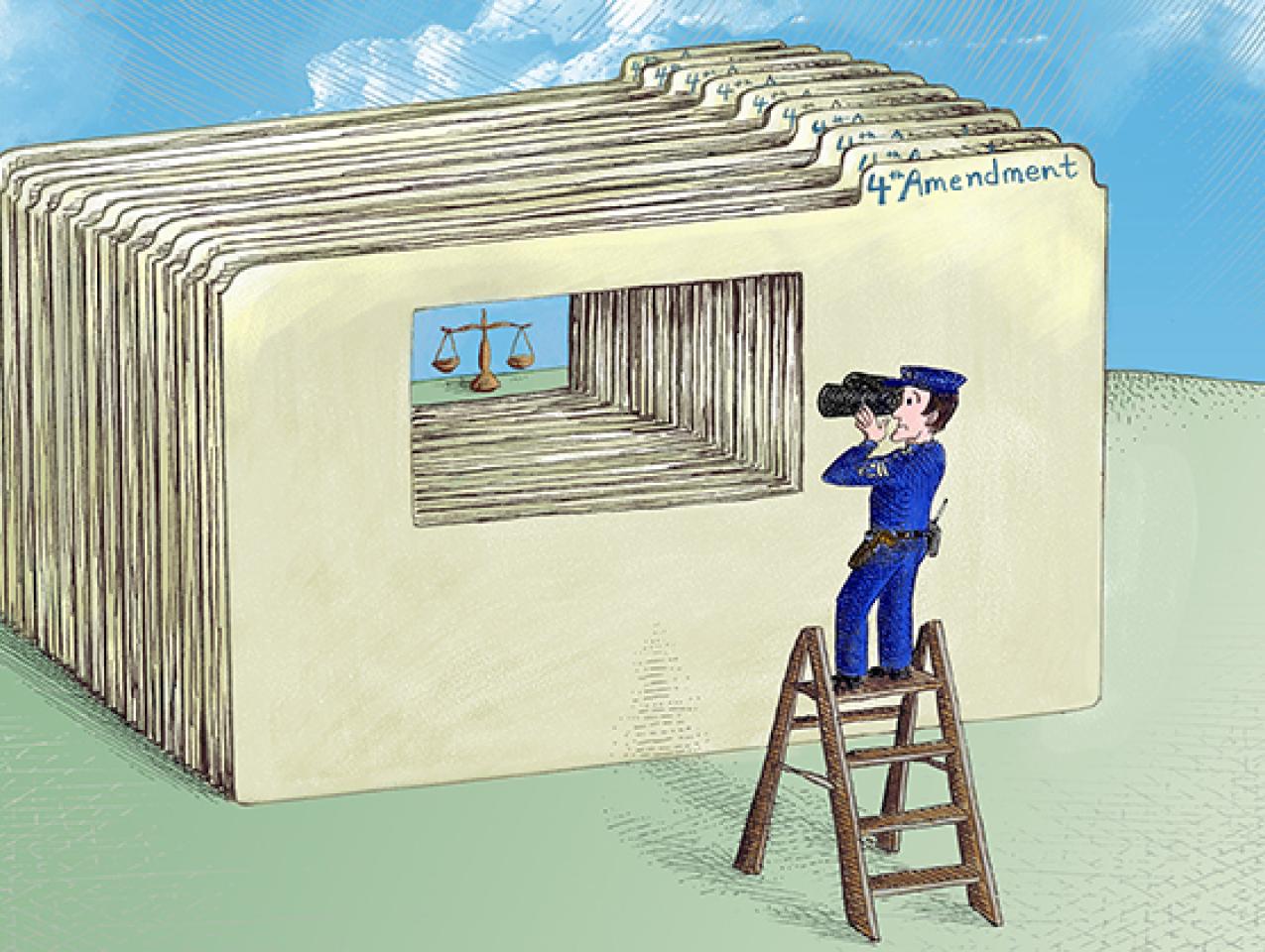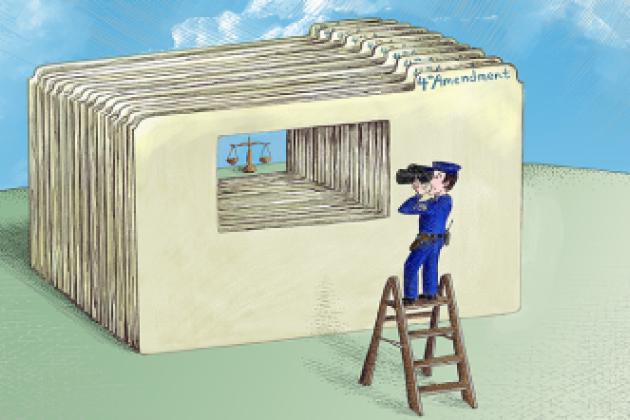- Economics
Wild ocean fisheries are iconic open-access resources. With few constraints on entry and harvest, migratory fish that roam the seas are vulnerable to fishing fleets from around the world. After World War II, as countries looked to new sources of protein; as people became aware of the health benefits of consuming many types of fish; and as new technologies emerged for locating and catching them, stocks for some of the most valuable species plummeted. Among those are the Atlantic Blue Fin tuna, Big Eye tunas of the central and western Pacific, swordfish in many areas, as well as the North Atlantic cod off the Georges and Grand Banks of Canada and the United States. Other stocks under pressure include Atlantic mackerel and herring. Even less popular fish have been put at risk from overfishing, such as various shark species.
Indeed, by the late 1950s and 1960s, alarms were sounded in academic economics and biology journals, as well as in Science and Nature, two pre-eminent scientific journals, about the impending collapses in key fish stocks. The ecologist Garrett Hardin’s master work, The Tragedy of the Commons, appeared in 1968. Although it was not focused on fisheries, it laid out clearly the problems encountered in all open-access resources, where there were no access controls or property rights. Hardin’s argument was clear: When individuals do not bear the full costs of their fishing effort, they will overfish. Under open access, individual incentives are straightforward: Fishers will only consider the net economic returns from their harvests and not consider the long-term costs of overfishing. In the aggregate, the mechanics of this thinking led to an inexorable result: Around the world, vessel numbers grew; crews increased; boats became larger and loaded with sonar to find fish and with new catching technologies; and new processing plants were opened. Harvests skyrocketed. Fishing and the fishing industry became an attractive way of achieving economic growth, especially in remote regions that did not have opportunities for agricultural or manufacturing expansion. Small communities could blossom, as could countries where fishing composed a major source of GDP. Thousands of fish stocks were open season, and stocks collapsed.
Around the developed world, the response was uniform: State command-and-control regulation. Limited entry restrictions—especially toward foreign fleets—were put into place, particularly after 200-mile coastal exclusive economic zones were recognized in 1982 by the international Law of the Sea Convention. Even within country jurisdictions, various fishing effort controls were put into place, such as technology restrictions on the type of fishing equipment that could be used and the vessel size, along with the seasons of harvest. For country regulators, biologists, and many economists, these were textbook conditions that could be addressed by scientific interventions and the police power of the state.
The problem was that fishery regulation often failed because it did not align with the incentives of fishers themselves. It became the fishermen against the state. Since property rights were not assigned within a regulated fishery, those who could outcompete others triumphed. They still caught more fish and still had no incentive to conserve or invest in the stock or voluntarily reduce fishing efforts. Their competitors would not, after all. As stocks continued to fall, fishing seasons were shortened. Shorter times for fishing, in turn, raised the returns from investing in new equipment, larger vessels, and hiring more crews. The race was on. Shorter seasons meant that all fish had to be caught during that time period and frozen or canned for consumption year round—often a much lower-valued product. Fishery rents or value continued to be dissipated with too many vessels, too many crews, too many processors, and too many regulators. An egregious example is the Pacific Northwest Halibut fishery, shared by Canada and the United States, where the entire season by the late 1980s and early 1990s was 4 to 6 days! There was no fresh halibut for market, but only the less-coveted frozen fish, and stocks still declined.
By the late 1980s an alternative to state command-and-control regulation emerged—rights-based management (RBM). Under RBM, a total annual allowable catch (TAC) was set and shares in it or individual transferable quotas, ITQs, were distributed to fishers. Either because of the high costs of assigning complete private property rights to migratory ocean fish stocks or political resistance to such assignments, ITQs were not property rights to the stock of fish, but rather to the right to fish. Even so, they fundamentally changed incentives with regard to exploitation and conservation practices. Where ITQs were secure and long-lasting, fishers now had an incentive to protect the stock. The value of their ITQs depended upon it.
Moreover, once ITQs were put into place, effort regulations, such as fishing seasons or equipment controls, were no longer needed. Once a TAC was set, each fisher or vessel owner who had a share in it, could decide when, where, and how to fish. If there was overfishing, then the TAC would be lowered; if the stock rebounded, the TAC would be increased; if one fisherman was better at fishing than others, he could purchase ITQs from his less-skilled colleagues. Under this setting, each fisher had a stake in the long-term fishery. Through purchase and consolidation of quota shares, the number of vessels and crews declined, just as was necessary to counter the effects of the open access where there were too many of both.
With more flexible, longer fishing seasons, fishers could adjust harvests according to consumer preferences. They could invest in state-of-the-art catch methods and refrigeration to avoid damaging caught fish. Vessels could avoid processing and return to port to meet airplanes that would rush the fresh fish to market. Fishers had incentive to explore the vast oceans to discover new, relatively unknown stocks or to locate new demands for less valuable fish. The discovery of unexploited stocks and marketing of Chilean Seabass is an example.
Wealth was created; profits soared; fish stocks stabilized or rebounded where rights-based management was implemented. In a 2008 Science article, the authors examined over 11,000 fisheries worldwide and concluded that catch shares or fishing quotas had or would have allowed most stocks to rebound or, at minimum, stabilize. There was finally success in combating the Tragedy of the Commons. Where the fishing industry was collapsing due to past overharvest and plunging stocks, wealth was returning. Some deteriorating fishing communities rebounded. Currently, at least 24 major fishing nations employ rights-based management via catch quotas as a major component of their fishery management—New Zealand, Iceland, Australia, Canada, USA, Greenland, Holland, Norway, Denmark, Sweden, Estonia, Germany, UK, Portugal, Spain, Russia, Morocco, Namibia, South Africa, Chile, Peru, Falkland Islands, Mexico, Argentina, and the Faroe Islands. Close to 25% of the global catch is taken under individual transferable quotas.
What has made ITQs so successful is that they are a type of property right, and as with all property rights, their advantages depend upon the security of ownership, range of rights allowed, such as trading and inheritability, and the time frame. The longer the time frame, the greater the decision-making ability; and the more durable the right, the larger are the economic and social benefits. In fact, this claim is bolstered by empirical evidence across a vast array of resources beyond fisheries—including land, housing, intellectual property, water, timber, and oil and gas deposits. Where rights are attenuated through shorter time horizons of ownership, more uncertainty of control or decision making via potential state intervention, higher tax rates, more limits on trading, then the benefits of a property rights regime are dampened.
Given the success of ITQs or catch shares, one would think they are being celebrated where they have been implemented, and that there are many proposals for further adoption elsewhere. To the contrary. Their very success has generated critical opposition from many sources, including fishery regulators and biologists. When more responsibility for fishery management is turned over to fishers themselves, less is left for regulators to control. Regulators often distrust fishermen, and the two parties tend to disagree on the condition of the fishery—regulators rely on fishery models and fishers on observation and experience. Regulators are skeptical of the ability of fishers to manage the resource upon which their livelihood depends.
Other opposition against ITQs comes from small fishers and their communities that sense they are being left behind, from the politicians who represent those communities, and from some fishery economists and others who study them. They claim that ITQs have been given out for free and that fishery values ought to be more broadly shared. This is a huge issue because of the political attractiveness of redistributing fishery-based wealth. The source of the problem is in the allocation of catch quotas. Most catch shares are assigned via grandfathering where the share of the annual total allowable catch granted to each fisher is based on historical harvests. Those with larger past harvests get more and those with smaller ones get less. This seems inequitable, but grandfathering is used everywhere and all the time. It is a type of first-possession right, where property rights are assigned on a first-come, first-served basis. It is the most common way of assigning property rights of any kind.
The usual explanation for grandfathering is that incumbent fishers are so politically influential that they have to be bought off to accept the new arrangement by granting them privileged access to the fishery. Under this explanation, there is no economic justification for grandfathering—it is all politics. But most fishermen, even if they are locally prominent, wield less influence nationally. And where ITQs have been adopted, fish stocks have already fallen so low that the industry has had far less political power. The ubiquity of grandfathering suggests something more fundamental—that those who can survive and prosper in an open-access or even regulated fishery are likely to be the very best fishermen, and, hence, are the ones who, for efficiency reasons, should be given the largest shares.
But how could fishermen differ in skills? In every fishing community there is a hierarchy of fishers based on their skills. The best fishermen are termed high liners. They better read the movement of currents and the shifting of fish in response to seasons, water temperature, food supplies, and other environmental factors; they know more about how to set nets and hooks and where to place them; and they better predict the best times and locations to fish than do their colleagues. These are the fishers that others follow. Better fishermen also are better able to invest in the best equipment and vessels, if they retain the profits from their harvests. The higher earnings of high liners enshrined in free allocation of fishing quotas allow them to self-finance. Banks and other sources of financial capital are more likely to lend to them due to their higher cash flows and reputation for success.
Because these fishers will have had higher catches in the past based on their skills and capital, they receive larger shares or more quota in the TAC. This seems inequitable, and it is. It implies that new entrants into the fishery will have to buy what others received for free, and they will. If those with grandfathered quota also acquire additional quota to take advantage of economies of scale in fishing, in processing, in transport, and in marketing, there will be consolidation in the fishery. There will be fewer vessels, crews, and processors, and some small fishing villages will fall into decline.
Recall though that the problem with open-access or regulated fisheries is that there are too many vessels, too many crews, and too many processors. Too many boats, in other words, chasing too few fish. We know how that movie ends. With collapsing stocks, these vessel owners, their crews, and their communities are doomed economically anyway. Catch shares, grandfathered in, and total allowable catches, however, have allowed for the script to be rewritten, for the movie to end in a new and more positive way. Wealth has been created by individual private property rights or by private community rights, termed Territorial Use Fisheries or TURFs. This is a market solution to an age-old problem.
But many see the inequity in this happy ending as a fatal flaw. Politicians, regulators, fishery economists and biologists, and community activists see a “public resource” generating benefits for a private few. They overlook the fact that the crews are employed, that the service industries provide fuel and maintenance for vessels, and that the marketing industries support a successful fishery—not to mention the ecological benefits of a revived fishery. Indeed, where ITQs have been successful and some fishermen have become relatively wealthy, politicians now see an opportunity to grab rents, to capture a greater portion of the fishery wealth for programs and activities that they support. It is ironic that the very success of rights-based management creates the conditions for competition for their profits. Had the process not been successful, there would be no wealth or rents to covet. Critics of grandfathering call for periodic reallocation of fishing quotas via auctions, whereby the rents would be captured by the state. This outcome seems very attractive to many.
If the allocation of fishing quotas did not matter for the outcome or total rents or wealth in the fishery, then there would be little cause for concern. Some fishers would lose and others would gain if grandfathered rights were taken by the state and periodically auctioned. The government would have more revenues for hospitals, schools, roads, and other programs. But there is no empirical basis for the hypothesis that allocation does not matter. The most common proposal is for the state to seize grandfathered ITQs and periodically auction them back to fishermen. Fishermen would use their profits to buy quota in the auction with the revenues going to the state. For politicians, this seems like a new pot of revenue, generated by fishery ITQs. But politicians and other auction proponents miss the impact of this reallocation on property rights security. Repeated auctions would shorten time horizons and hence, incentives to invest in the fish stock via conservation or avoiding the catch of juvenile fish. The expropriation of fishing profits via auctions would limit the ability of fishermen to invest in new vessels, which can cost $10,000,000 or more, or to train crews for long-term employment. The added uncertainty of quotas that would be auctioned off, perhaps to others, also lowers incentives to search for new locations and fish to catch and to investigate new market opportunities. No fisherman would have enough confidence in their quota to capture any benefits.
These are all wealth creative, entrepreneurial actions that depend upon long time horizons. They also depend upon security of decision-making ability. If quota owners cannot anticipate that their decisions, which are often very costly to implement, will be carried out or that they will not capture the resulting returns, they will shift fishing practices toward the immediate run and make decisions over which they have more control. This will change rent and wealth profiles and trajectories. Fishery rents are not independent of the property rights regime.
Politicians, however, have short time horizons and face many competing demands. And they bear no direct costs for their interference in the fishery. Hence, successful quota owners, ostensibly using a public resource, are vulnerable targets. Politicians, however, also know little about how to successfully auction a fishery quota—it has been done so rarely. In many cases there are few likely bidders, so the auction will not be a competitive one. Even those who might win, displacing incumbents, will no longer have the capital to invest in fleets or crews. Further, politicians or fishery regulators will not know how often to hold an auction. Should it be whenever the state needs more funds? When the fishery is sufficiently wealthy? When the fishery has rebounded from excessive past harvests? Unfortunately, economics and biology are unlikely to compete successfully with political pressures for revenues, and auctions will be held too often and quota terms will be far too short.
In fact, throughout the world where catch shares have been successful and previously imperiled fisheries are now vibrant, grandfathered quotas and the whole system of rights-based-management are under threat. In Iceland, in Peru, in the Faroe Islands, among other places, governments in need of funds are considering taking the quotas and redistributing them via recurrent auctions. The success of the quota system and the fishermen within it is challenged by a return of open-access. It is the tragedy of the commons, revisited.
In a world where more and more people depend upon rich, resilient fisheries, it is unfortunate that politicians, regulators, and many fishery biologists and economists have forgotten the lessons of the commons in their support of redistribution of fishery rents. The rents will be redistributed and they will be smaller—unless those who understand the role of secure property rights in achieving positive economic and biologic outcomes marshal their arguments and evidence to counter these zero- or, indeed, negative-sum redistribution efforts.
















